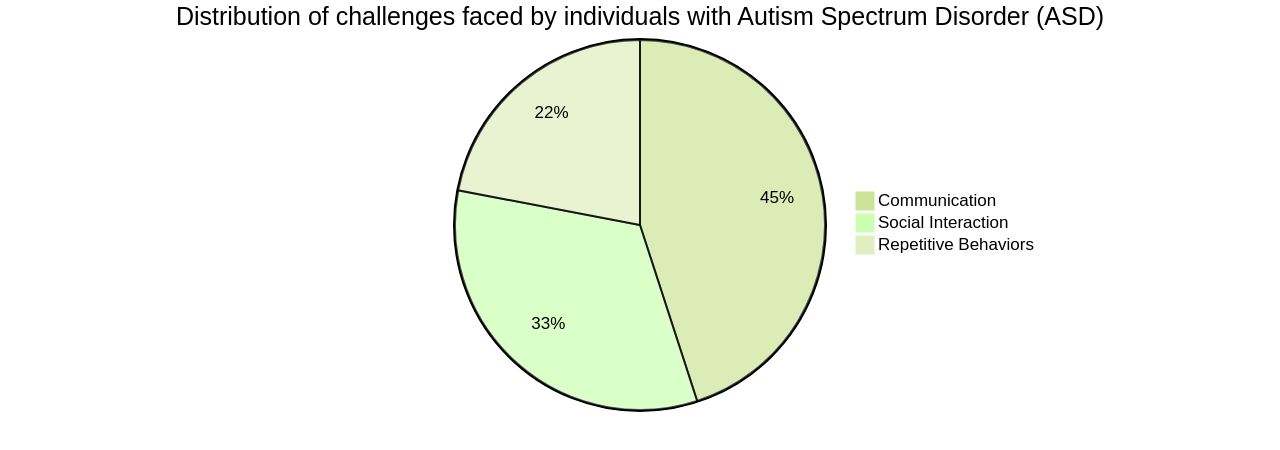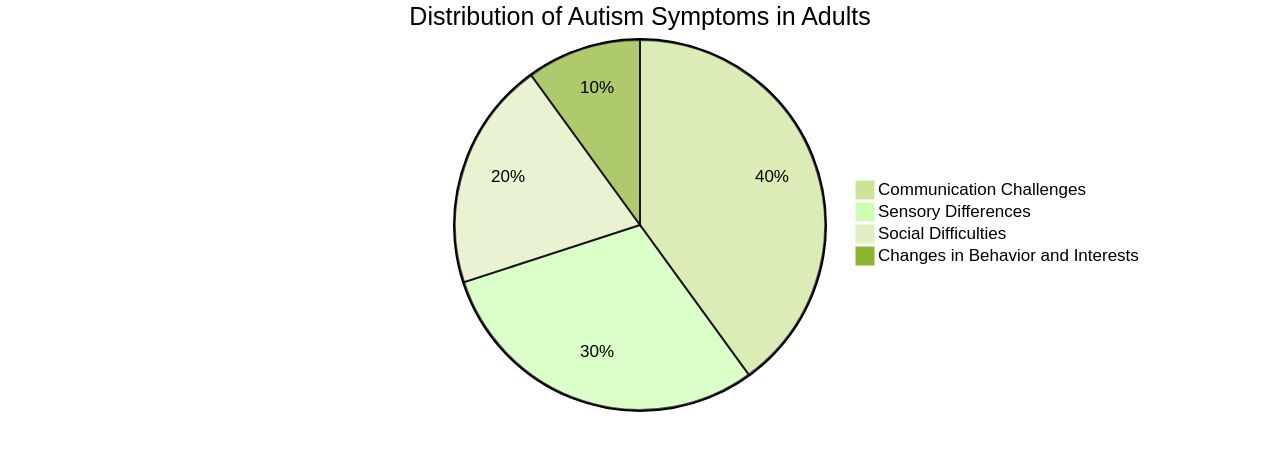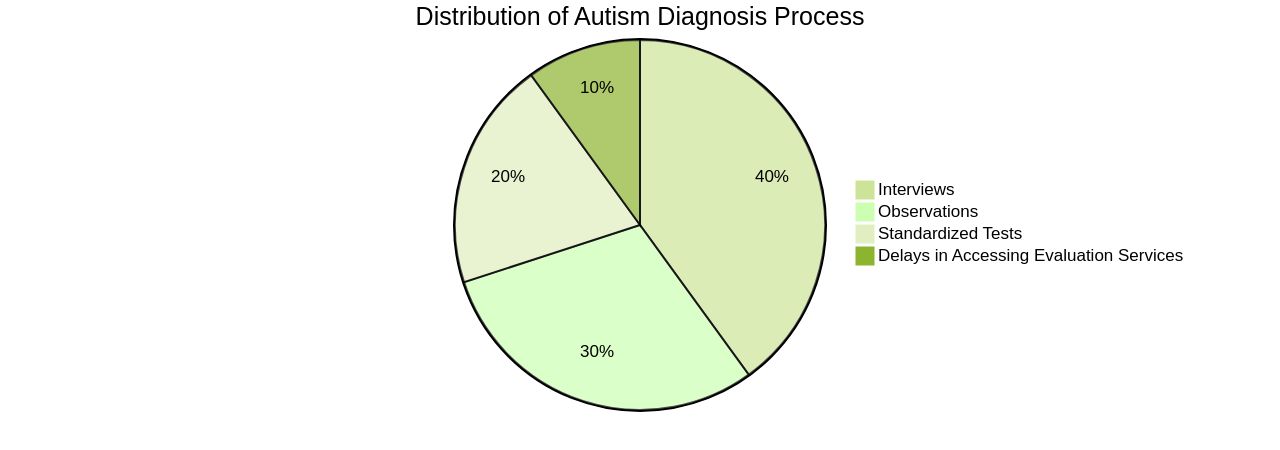Introduction
Autism Spectrum Disorder (ASD) is a condition that affects individuals in diverse ways, impacting social interaction, communication, and behavior. From early childhood to adulthood, ASD presents unique challenges and requires support and understanding.
In this article, we will explore the common symptoms of autism in adults, the importance of recognizing these symptoms, and the process of seeking professional evaluation and diagnosis. By understanding and identifying autism symptoms, we can provide the necessary resources and interventions to help individuals with autism thrive.
What is Autism Spectrum Disorder (ASD)?
Autism Spectrum Disorder (ASD) is a condition that impacts individuals in diverse ways, manifesting as challenges in social interaction, communication, and repetitive behaviors. This neurodevelopmental disorder, often initially presenting in early childhood, continues to affect individuals throughout their lifetime. The DSM-5, utilized by clinicians for diagnosis, stipulates that core features of autism must be present in early childhood, but they may not fully manifest until social demands surpass an individual's capacity to cope.
Moreover, these challenges might be hidden by acquired coping strategies and support. Autism tends to become apparent by the age of 3, but earlier diagnosis and intervention are crucial. It's also important to note that ASD can present differently in adults, and these variations may be due to changes in behavior and interests with age, or significant life changes such as transitions in education, employment, or family status.
Autism's impact isn't uniform - it affects each person uniquely. Some individuals may excel in areas like math and history, while others may have learning difficulties or be nonverbal. It's also worth noting that autism is a neurological, not a mental health disorder.
In recent years, the number of diagnosed cases has surged due to increased awareness and broader diagnostic criteria. The U.S. Centers for Disease Control and Prevention estimates 5.4 million adults, or about one in 45, have ASD. This prevalence has significant implications for individuals, families, and society, necessitating collaborative efforts to address the needs of those with autism and their families.
Continued research on autism prevalence can offer valuable insights into the condition's causes, potentially leading to the development of more effective interventions and support services. The early identification of autism is crucial for providing timely and appropriate support to children and their families. Whether you suspect you or a loved one may have ASD, understanding the common signs is the first step.

Common Symptoms of Autism in Adults
Autism can present itself in various forms in adults, impacting their social interactions, communication, behaviors, sensory processing, and cognitive abilities. Some adults with autism may find it challenging to interpret social cues, maintain eye contact, or form meaningful relationships. They may prefer solitary activities and face difficulties in initiating or maintaining conversations.
Communication can be another hurdle, with issues surfacing in both verbal and non-verbal forms. While some adults may have limited speech, others struggle with understanding sarcasm, irony, or figurative language. Autism also brings about repetitive behaviors and restricted interests.
These can manifest as hand-flapping, rocking, or repetitive speech, alongside intense interests in specific topics and rigid routines or rituals. Sensory sensitivities are another common trait in adults with autism. They may be hyper or hypo-sensitive to stimuli like light, sound, touch, taste, or smell, causing discomfort or distress in certain situations.
In addition, cognitive processes like planning, organizing, problem-solving, and flexible thinking, collectively termed as 'executive functioning', can be challenging for adults with autism. This can affect their ability to manage time, set goals, and adapt to changes. However, it's essential to remember that autism looks different in every individual.
Not all adults with autism will display all these characteristics, and their behavior and interests may change with age or due to major life changes. Co-existing conditions like anxiety or ADHD could also influence how autism manifests in an individual. Despite the challenges, with the right support and understanding, autistic individuals can thrive in their unique ways.
Importance of Recognizing Symptoms in Adults
The journey of self-discovery in adults on the autism spectrum unfolds with the recognition of autism symptoms. This awareness paves the way for self-acceptance, fostering a sense of self-worth and overall happiness.
For instance, one physician's understanding of autism and neurodivergence has helped him to identify sensory and communication differences in patient care. This understanding is crucial in a society where 1 in 45 adults are diagnosed with autism spectrum disorder (ASD), and many potentially remain undiagnosed or misdiagnosed.
Accessing proper support and services becomes possible when autism symptoms are identified in adults. This might include tailored therapies, educational material, vocational training, and community programs.
However, receiving a diagnosis can be challenging due to the lack of specialists and high costs, especially for adults. The Adult Autism Health Resources initiative by Harvard Medical School, backed by the Nancy Lurie Marks Family Foundation (NLMFF), is a step towards improving autism care and the lives of autistic adults and their families by educating clinicians, caregivers, and self-advocates.
Understanding autism symptoms can also enhance interactions and relationships with family, friends, and colleagues, fostering empathy, patience, and effective communication. This understanding is especially important considering the prevalence of autism in children is 2.78%, but neurodivergent traits can be found in as many as 15-20% of the general population. Lastly, recognizing autism symptoms can spur personal growth and development. It enables individuals to seek strategies and interventions to overcome challenges, develop new skills, and fulfill their potential. However, it is important to remember that as individuals age and experience changes in behavior and interests, the manifestation of their autism may also change.

Seeking Professional Evaluation and Diagnosis
Identifying potential signs of autism necessitates a comprehensive evaluation, conducted by a trained professional, to understand the indicators better and ascertain if an autism diagnosis is suitable. The assessment process includes detailed interviews, observations, and standardized tests that scrutinize social communication, behavior, and developmental history.
This diagnosis forms the basis for creating a personalized support plan and linking individuals with the right resources and interventions. The Diagnostic and Statistical Manual of Mental Disorders (DSM-5) provides clinicians with a framework for diagnosing Autism.
These criteria necessitate the presence of Autism's core features during early childhood, often appearing by age three. However, for some children, symptoms may not fully reveal themselves until social demands surpass their coping abilities.
Moreover, challenges may be concealed by learned coping strategies and support. Regrettably, securing an appointment with a specialist for diagnosis can be a prolonged process, sometimes exceeding a year.
This delay affects early diagnosis, leading to delayed access to crucial intervention services, which are known to improve child and family outcomes. Recent research suggests that trained community-based providers can accurately diagnose autism in most cases, potentially reducing long waiting times for evaluations. Autism diagnosis and treatment programs are primarily designed for preschool-aged children, and their availability and awareness are not uniform. While data on outcomes for some of these programs are published, comparative studies of these intervention programs are lacking. Understanding autism and its impact on an individual's life can lead to increased compassion and improved quality of life. It's essential to remember that with the right support, self-advocacy, community, and acceptance, individuals with autism can thrive.

Conclusion
In conclusion, Autism Spectrum Disorder (ASD) is a complex condition that affects individuals in diverse ways, impacting their social interaction, communication, and behavior. Recognizing the common symptoms of autism in adults is crucial for providing the necessary support and interventions to help them thrive.
Autism can manifest differently in adults, with challenges in social interactions, communication, sensory processing, cognitive abilities, and repetitive behaviors. However, it's important to remember that autism looks different in every individual.
Not all adults with autism will display all the characteristics mentioned. With the right support and understanding, autistic individuals can thrive in their unique ways.
Recognizing autism symptoms in adults is not only important for their own self-acceptance and personal growth but also for accessing proper support and services. This includes tailored therapies, educational materials, vocational training, and community programs.
Understanding autism symptoms can also enhance interactions and relationships with family, friends, and colleagues. Seeking professional evaluation and diagnosis is crucial for a comprehensive understanding of an individual's indicators and to create a personalized support plan. Unfortunately, securing an appointment with a specialist for diagnosis can be a lengthy process. However, recent research suggests that trained community-based providers can accurately diagnose autism in most cases, potentially reducing long waiting times. By understanding and identifying autism symptoms in adults, we can provide the necessary resources and interventions to help individuals with autism thrive. With the right support systems in place—self-advocacy, community acceptance—we can ensure the well-being and success of individuals on the autism spectrum.




